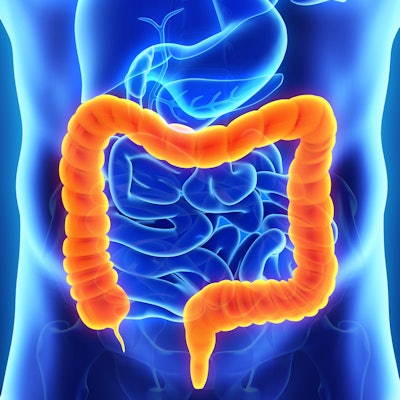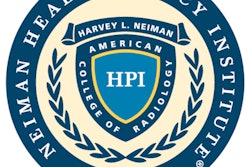
CT colonography (CTC) with a polyp size threshold of ≥ 10 mm is more effective than multitarget stool DNA and fecal immunochemical testing for diagnosing advanced neoplasia, according to a study published online March 11 in the American Journal of Roentgenology.
The results could help patients avoid unnecessary colonoscopies, according to a team led by Dr. Perry Pickhardt of the University of Wisconsin in Madison.
"Among noninvasive CRC screening tests, CTC with ≥ 10-mm threshold most effectively targets advanced neoplasia, preserving detection while also decreasing unnecessary colonoscopies compared with multitarget stool DNA and fecal immunochemical testing," the group wrote.
Noninvasive ways to screen for colorectal cancer include multitarget stool DNA, fecal immunochemical, and CTC testing, all of which can help patients avoid unnecessary colonoscopies. But the performance of these tests hasn't been adequately compared, Pickhardt and colleagues noted.
"These noninvasive screening tests differ in their ability to detect advanced neoplasia [which may include advanced adenomas, high-risk serrated lesions, and invasive cancer], and these diagnostic performance differences must be balanced against other features such as cost, safety, and patient acceptance," they wrote.
To evaluate the various types of colorectal screening tests, Pickhardt et al performed a literature review of 10 multitarget stool DNA, 27 CTC, and 88 fecal immunochemical testing studies that included data from a total of 2.4 million asymptomatic adults. The investigators evaluated each test's positivity rate -- which would lead to colonoscopy -- as well as their positive predictive value and detection rates for both advanced neoplasia and colorectal cancer.
The team found that the performance of colorectal cancer screening for advanced neoplasia was highest with CTC at a 10-mm polyp size threshold.
| Comparison of performance of noninvasive colorectal screening tests | ||||
| Multitarget stool DNA | Fecal immunochemical testing | CTC at 6-mm polyp size threshold | CTC at 10-mm polyp size threshold | |
| Test positivity rate (= to optical colonoscopy referral rate) | 13.5% | 6.4% | 13.4% | 6.6% |
| Positive predictive value | ||||
| Advanced neoplasia | 26.9% | 31.8% | 34.4% | 61% |
| Colorectal cancer | 2.4% | 4.9% | 3.5% | 6% |
| Detection rate | ||||
| Advanced neoplasia | 3.4% | 2% | 4.8% | 4% |
| Colorectal cancer | 0.31% | 0.33% | 0.46% | 0.46% |
Despite the study results, the investigators acknowledged that effective colorectal cancer screening may come down to patient preference.
"Each colorectal cancer screening option has relative advantages and disadvantages that should be carefully considered and tailored to the individual," they concluded. "In the end, the 'best' test may be the one that the patient is willing to undergo."



















